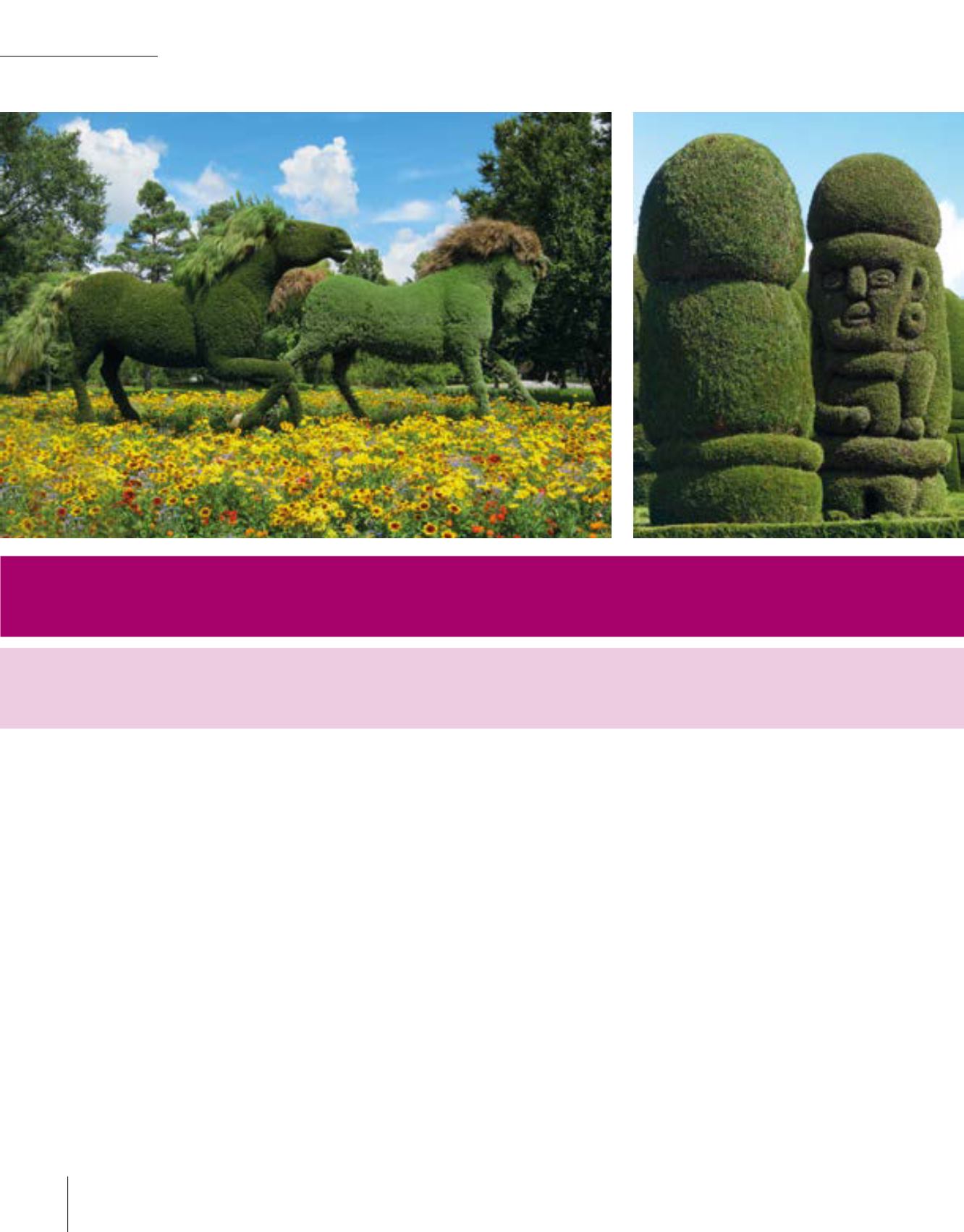
84
bilgi hapı
information pill
An artistic touch to gardens
Imagine green trees shaped like a geometrical object, an animal, a regular object or a person. They all seem alive; as
if they will rise up and follow you if you start walking away…
Usta bir bahçıvanın elinde geometrik bir şekil, bir hayvan, bir eşya ya da bir insan şekline sokulmuş yemyeşil
ağaçlar düşünün. Dokunsanız canlanacak, yürüyüp gitseniz arkanızdan gelecek gibi canlı…
Bahçelere sanatsal dokunuş
Eski Romalıların başlattığı, kısa
zaman içinde tüm dünyanın
benimsediği bir sanat
Topiary… Türkçe ismiyle “ağaç
budama sanatı”. Ayrıca insanın
doğa ile bağının ve yeşile
olan sevgisinin ve bağlılığının
da ispatı… Sadece belirli
bitkilerle yapılabilen bu sanatın
örneklerini Fransa, Hollanda
ve İngiltere başta gelmek
üzere birçok ülkede görmek
mümkün. Bursa’da ise Botanik
Park’ın içinde bulunan tema
bahçelerinde…
Eski Roma’da İmparator
Augustus döneminde
başladığı bilinen ağaç
budama sanatı, bugüne dek
birçok uygarlığın benimsediği
bir sanat. Kelime anlamı
Latincedeki “süsleme amacıyla
çevreyi düzenleyen bahçıvan”
ifadesini karşılayan “Topiarius”
kelimesinden geliyor.
Romalıların, Yunanlılardan ya
da Musevilerden etkilenerek
başladığı tahmin edilen,
evlerindeki ve sokaklarındaki
bitkileri şekillendirme
çalışmaları 1000’li yılların
Topiary is an art form discovered
by Ancient Romans which has
been accepted all over the world
in a short amount of time… In
Turkish, it is known as the “art
of pruning”. In addition, it is the
proof of the bond of people
with nature as well as our love
and devotion to green… This
form of art can be carried out
only with certain plants and it is
possible to see examples of it in
many countries such as France,
Holland and England. As well as
the theme gardens located in the
Botany Park of Bursa…
The art of pruning trees, known
to be dating back to Ancient
Rome during the reign of
Emperor Augustus, is a form of
art that is embraced by many
civilizations today. It is named
after the Latin word “Topiarius”
meaning the “gardener who
arranges the landscape for
decorative purposes”. Romans
are thought to have started
shaping plants at their homes
and on their streets under the
influence of Greeks or the Jews
which have been recognized
and applied by other civilizations
starting from the beginning of
the 1000s. Some of these pieces
that date back to the Roman
Period are on exhibit at the J.
Paul Getty Museum in the United


